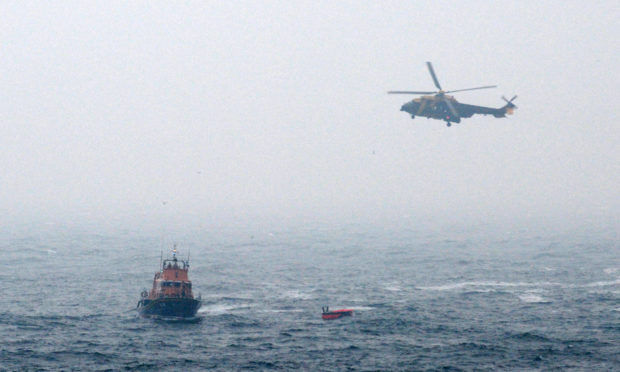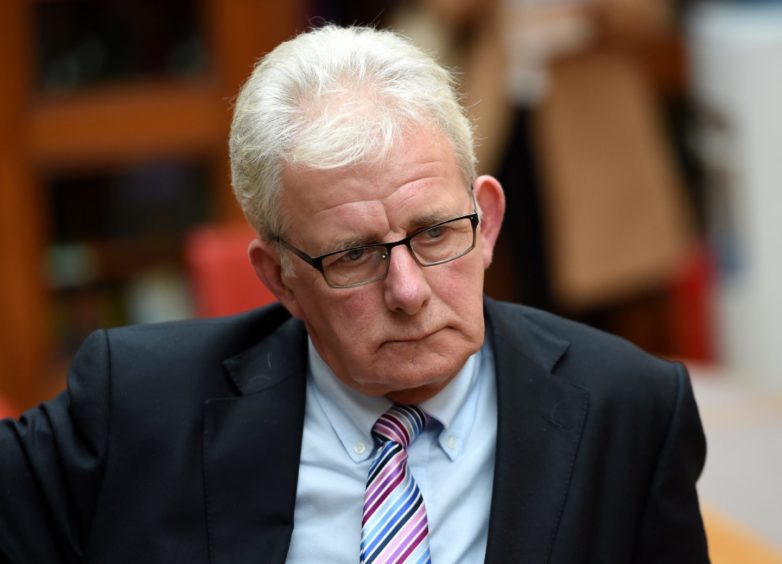The co-pilot of a helicopter which crashed off Shetland has been praised for his “quick-thinking” in deploying flotation bags to keep it afloat and allow passengers to escape.
The actions of Captain Alan Bell were highlighted during the fourth day of a fatal accident inquiry into the Super Puma crash, just under two miles from Sumburgh Airport on August 23, 2013.
Adrian Cope, senior inspector of engineering with the Air Accidents Investigation Branch (AAIB), said Capt Bell “took the lead in assisting people to survive”.
The inquiry has heard the helicopter crashed into the Atlantic Ocean west of Sumburgh with little warning beforehand to allow anyone to react, then overturned and quickly filled with water.
Mr Cope said of Capt Bell’s actions: “The co-pilot realised what was going to happen and armed the flotation bags.”
He said flight crew are given additional training about the knowledge of the helicopter they are flying over and above that of passengers.
This “awareness” ensured that Capt Bell’s “quick-thinking” ensured flotation bags were deployed – preventing it from sinking – as well as knowing about the deployment of liferafts.
- October 20, 2020
- October 20, 2020
- October 19, 2020
- September 14, 2020
- September 11, 2020
- September 10, 2020
Mr Cope said that while the chief pilot had suffered a serious back injury, the co-pilot was fit enough to deploy the flotation bags to keep the helicopter afloat, and then provide the knowledge to deploy the liferafts from which a number of passengers were rescued.
Mr Cope said: “His awareness and quick-thinking was really crucial. That kept the helicopter on the surface. If the helicopter was to sink it would be a dire situation.
“He was aware of the liferafts. The main problem [with surviving passengers] was trying to find the emergency release handles.”
The AAIB has recommended that the offshore industry incorporates automatic release of both floatation bags and liferafts on entering the water in the event of flight crew being unable to carry out the procedures.
Familiarity with how emergency breathing set-up worked is issue
Many passengers on the Super Puma flight were not aware how their emergency breathing systems operated, the inquiry has heard.
There were three different re-breathing systems in operation at the time of the crash in 2013.
The first allows the passenger to blow a breath of air into the system prior to a ditching, and then use it once they are underwater.
The second has was a hybrid system which uses an “air bladder” in which there is a volume of air already available in the event of someone being submerged.
This was the type in operation on the tragic flight.
The third system involves a “scuba-type” system giving air to people underwater. This system was recommended to be put in place across the industry and has been accepted across the UK.
Advocate Depute Martin Richardson said: “A number of survivors were not aware they had the hybrid system.
“Some were able to activate an air supply but did not knw.”
Three of the four victims on the day of the crash drowned, with one remaining in the helicopter cabin.
New guidelines have been introduced regarding emergency breathing systems – with the scuba system being the recommended rebreather across the industry.
The fatal accident inquiry – being held virtually – is hearing evidence into the tragic circumstances of the Super Puma helicopter crash off Shetland on August 23, 2013.
Highlands and Islands Sheriff Principal Derek Pyle, who is conducting the inquiry, opened the session on Monday morning.
Video conferencing technology is being used during the hearing due to Covid-19 restrictions in place throughout courts across Scotland.
The passengers who died on the day were: Sarah Darnley, 45, of Elgin; Gary McCrossan, 59, of Inverness; Duncan Munro, 46, of Bishop Auckland; and 57-year-old George Allison, of Winchester.
A fifth victim, Samuel Bell, from the London area, committed suicide four years later.
The inquiry was told that he had attempted to save the life of another passenger, Mr McCrossan, after he had managed to escape from the submerged helicopter fuselage.
Sheriff Principal Derek Pyle said: “His death was clearly directly caused by the accident.”
The inquiry is hearing evidence from from survivors, counsel for families, the Civil Aviation Authority, helicopter operator CHC, and plane manufacturer AirBus.
The victims were offshore workers travelling onboard a Eurocopter AS332 Super Puma helicopter belonging to CHC Helicopters when it crashed on approach to Sumburgh Airport on August 23, 2013.
The aircraft was flying workers off the Borgsten Dolphin oil platform in the North Sea.
The inquiry is expected to last four weeks.

